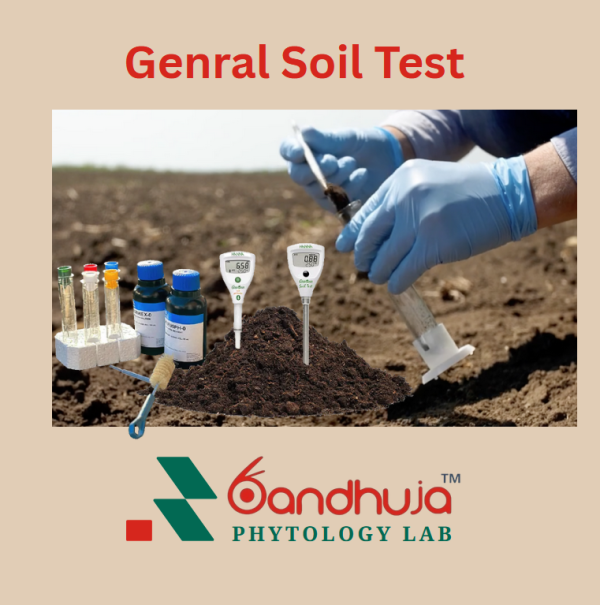Description
A soil test is a scientific analysis of a soil sample to determine its physical and chemical properties. This process is crucial for various applications, including agriculture, construction, and environmental management. Here’s a detailed overview of what a soil test involves:
Key Components of a Soil Test
- Sample Collection:
- Collect soil samples from different locations and depths to ensure a representative analysis.
- Use clean tools to avoid contamination and follow specific guidelines for sample size and handling.
- Laboratory Analysis:
- The collected samples are sent to a laboratory where they undergo various tests, including:
- Nutrient Analysis: Measures levels of essential nutrients like nitrogen (N), phosphorus (P), potassium (K), calcium (Ca), magnesium (Mg), and sulfur (S).
- pH Testing: Determines the acidity or alkalinity of the soil, which affects nutrient availability and microbial activity.
- Texture Analysis: Identifies the proportions of sand, silt, and clay, influencing water retention and drainage.
- Organic Matter Content: Assesses the amount of decomposed organic material, which is vital for soil fertility.
- Contaminant Testing: Detects harmful substances such as heavy metals, pesticides, or other pollutants.
- The collected samples are sent to a laboratory where they undergo various tests, including:
- Report Generation:
- After analysis, a report is generated that includes:
- Results of the tests conducted.
- Recommendations for soil amendments, fertilization, and management practices based on the findings.
-
-
Benefits of Soil Testing
- Optimized Fertilization: Helps farmers apply the right amount of fertilizers, improving crop yields and reducing costs.
- Soil Health Assessment: Provides insights into soil quality and health, guiding sustainable land management practices.
- Environmental Protection: Identifies contamination issues, allowing for remediation and protection of ecosystems.
- Informed Decision-Making: Supports land use planning, gardening, landscaping, and construction projects.
When to Conduct a Soil Test
- Before planting crops or starting a garden.
- When changing land use (e.g., converting farmland to residential).
- If there are signs of nutrient deficiencies or soil health issues.
- Periodically to monitor changes in soil quality over tim
-
15 parameters:
-
pH (Soil Acidity/Alkalinity) ,Organic Carbon ,Electrical Conductivity (EC) , Nitrogen (N) , Potassium (K) , Phosphorus (P) , Calcium (Ca) , Sodium (Na) , Zinc (Zn) , Boron (B) , Iron (Fe) , Magnesium (Mg)Sulphur , Coppur , Magnees
-
- After analysis, a report is generated that includes:


 Mushroom growth promoter fertilizer – Fungi Tonix -1 Liter
Mushroom growth promoter fertilizer – Fungi Tonix -1 Liter
Reviews
There are no reviews yet.